Committed to Doing Justice: It’s All About Love
BY GUEST BLOGGER | September 7, 2014
written by: Katie Murphy, Faculty Member, Gonzaga College High School (Washington, DC)
We see the graduate at graduation profile everywhere at Jesuit high schools: Open to Growth; Intellectually Competent; Religious; Loving; and Committed to Doing Justice. I settled into my seat on a plane to El Salvador and opened a blank page in my journal and for some reason, I thought of our grad at grad profile. What does it mean to be “committed to doing justice?” What does it look like? What does it demand? I wrote the words “Committed to Doing Justice” across the top of a blank sheet of paper and scanned my trip itinerary. What would a home stay in a rural mountain community, talks at the Universidad Centroamericana “José Simeón Cañas” (UCA – the Jesuit university), and pilgrimages to the assassination sites of Romero and six martyred Jesuit priests illuminate about commitment to justice? I dedicated my trip to El Salvador to investigating this question and in this article I would like to share a few scattered reflections.
But before I proceed, I need to explain something about my trip to El Salvador. I was not going on a vacation or to visit a resort; it was more of a justice immersion/pilgrimage. My trip was organized by the Ignatian Solidarity Network and CRISPAZ to investigate the lives of the 6 Jesuit martyrs killed 25 years ago as well as current justice issues. The trip was designed to raise consciousness. Though we met beautiful people, we learned about hard issues. We heard first hand testimonies of persons who survived massacres during the civil war. We stood at the site where men of justice were killed and looked at photos of their blood soaked bodies. We heard numerous talks from academics and campesinos about the present reality of the poverty, immigration and violence in El Salvador. As my reflections on justice reveal, I found the trip disturbing, challenging and inspiring.
Guns and Money
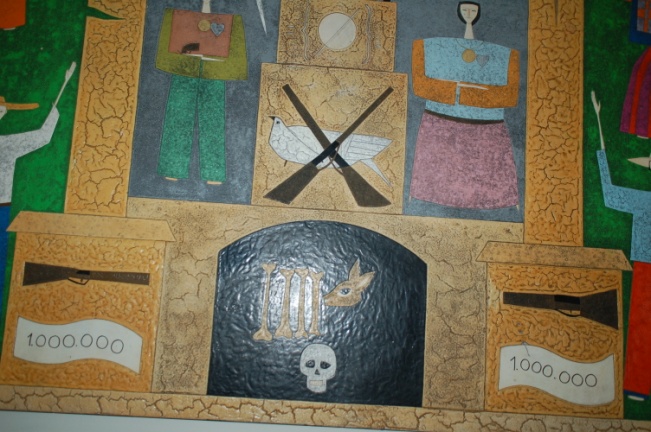
Mural in Universidad Centroamericana (UCA) Chapel. The UCA is the Jesuit university in San Salvador where the Jesuit martyrs taught.
The UCA Chapel confronted injustice and made me feel uncomfortable about my commitment to justice. In the back of the chapel, there were 14 drawings of torture, connecting the awful history of oppression of the Salvadoran people to the Stations of the Cross. Facing the altar to the left, there was the burial vault which contains the remains of the six martyred Jesuits gunned down by the El Salvador military on November 16, 1989, because they raised their voices against oppression. Behind the altar, there was a triptych with a large cross, complemented by two giant paintings on either side. The right side of the triptych grabbed my eye. On either side of the painting there was an image of a rifle and the number 1,000,000 and above the rifles there was a dove with two rifles making an X over it. What did that mean?
I learned that the rifle and one million stand for the military aid that the U.S. Government gave to El Salvador. We gave $1 million a day to a military government that massacred more than 34,000 civilians. That same aid, trained and armed the assassins who killed Romero, the six Jesuits and thousands of campesinos. The black section in the middle represents the reign of death and the massacres of the civilian while the X over the dove meant the guns negated peace. I felt directly connected to the images of torture and the martyrdom of the Jesuits through US policy. The oppressors were not just them, the military government of El Salvador; the oppressors were us, the United States of America. I felt indicted.
So what does it mean to be committed to doing justice? It means not to be indifferent, but to know about US policy and current events. In the 1980s, I simply did not know and never made an effort to know. Clearly, there is a horrible cost when Americans – you and I – do not stand for justice and the cost is real suffering for people, often in distant and poor places, like El Salvador. At the bare minimum, I saw that commitment to doing justice means taking time to research what is really going on in the world, with a special concern for the suffering of the poor and vulnerable. It means questioning US military aid and what is done with our money. It means taking the time to research the reasons why Central American youth are leaving their homes for the USA. Being committed to doing justice begins with the willingness to keep our eyes open, to look at the bleeding and hurting situations of our world, and to research and participate in the political process to defend human life.
Ana Zelaya of Cofamide
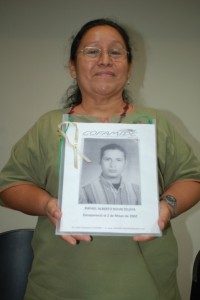
Ana Zelaya, founder of COFAMIDE, holding up a picture of her son, Rafael.
I met a woman named Ana Zelaya whose son, Rafael, left for America but never made it and his body was never found. Rafael is one of the many “disappeared” who are killed or die during the harsh migrant journey north. Ana said that when she lost contact with her son the sorrow was too great. She fell into a depression and stayed in a bed. Another son came to her after some time and told her that she had three other children to live for. Ana said that she got up and that her “tears turned into words and her words turned into demands.” She left without papers on the route that her son traveled. She crossed rivers, hid in shrubs, and faced the same dangers as her son. She went to Guatemala and found the homes of the coyotes (human traffickers paid to guide migrants to the US) searching for answers. She traveled into Mexico and visited prisons looking for her son. I asked her – “Weren’t you scared?” And Ana said, “No. When you have lost a son there is no fear; only courage.” Ana started a group called Cofamide that searches for the disappeared and returns bodies for burial to grieving families. She has nothing – no money, no education – but she does have commitment.
So what does it look like to be committed to justice? It looks like commitment. To me, it looks like Ana Zelaya. Commitment is an oath backed by unstoppable love. It is more than a plea (just one letter advocating for change) or an offering (volunteering occasionally or a donation); it is a personal commitment backed by the force of your life.
Fr. Jon Sobrino, S.J.
Fr. Jon Sobrino was one of the priests targeted by the assassins on November 16, 1989, but he was in Thailand when soldiers dragged his friends from sleep and riddled their bodies with bullets. Today, Sobrino is a famous theologian who does not waver from denouncing injustice. In one of our talks, he told how the UCA’s commitment to doing justice demands confrontation of the injustice.
So what did it look like for a university such as the UCA to be committed to justice in El Salvador in the 1980s? It meant studying the reality of El Salvador – the poverty, the oppression – and working concretely for justice. It meant publishing papers that denounced unjust structures that caged people into poverty; it meant denouncing a sham election. It also meant persecution and lies. Jesuits, even high school teachers leading service trips, were accused of being communists. Long before the martyrdom, bombs began exploding at the UCA; there were 26 bombings. Donors refused to give, the university was libeled in the press and there were flyers scattered all over the country that read: “Be a Patriot. Kill a Priest.” And then there was the assassination of the 6 Jesuits, the housekeeper Elba Ramos, and her daughter, Celine Ramos on November 16, 1989.
Sobrino stressed that working for justice demands confrontation and sacrifice. “The poor do not drop down from heaven, but are created by our own hands, by unjust structures and oppression. To take care of the poor is to confront those structures that make the poverty.” He then connected this to the life of Jesus. Jesus confronted unjust structures, such as the temple authority, and Jesus was slandered, threatened, persecuted and even killed. Sobrino stressed that for Christians, the way of justice, is the cross. But this is not all bad news since for us the cross is the symbol of victory. We believe that the cross is the way to the Resurrection. Just as a lifeless body of Christ could not be held down by death, so too the truth for which the six Jesuit priests stood for could not be buried in El Salvador. The assassination of the Jesuits resulted in an advocacy furor in the United States and El Salvador that ultimately pushed the peace process.
So what does committed to doing justice look like? It looks like doing; it is confronting injustice and it feels uncomfortable. It looks like picking up the cross and not letting go.
Monsignor Romero
I stood before the bloodied vestments worn by Archbishop Romero on March 24, 1980. Romero was standing behind the altar when a single bullet pierced his aorta. Like Jesus, Romero knew that he would be killed. He did not live to say the words of the consecration – “This is my body… This is the chalice of my blood,” but his very death was the offering. Just days before Romero was killed, he preached: “I need to say that as a Christian I do not believe in death without resurrection. If they kill me, I will rise again in the people of El Salvador…If they manage to carry out their threats, as of now, I offer my blood for the redemption and resurrection of El Salvador. If God accepts the sacrifice of my life, then may my blood be the seed of liberty and the sign that hope will soon become a reality. May my death, if it is accepted by God, be for the liberation of my people, as a witness of hope in what is to come. You can tell them that if they succeed in killing me, I pardon and bless those who do it. A bishop may die, but the Church of God, which is in the people, will never die.”
Romero was a man committed to doing justice, but how did he become so committed? How did he forge the courage and desire to stand with the poor and continue the fight for justice even when it was dangerous? Prior to and during the trip, I dedicated time to reading about Romero, trying to get a glimpse of how he moved from a person who supported the unjust status quo, to a man who died speaking out for justice. Over and over again, two habits reappeared: Romero prayed and he stayed connected to the poor. In the Jesuit grad at grad language, Romero was “religious” and “loving.”
I think that Romero’s commitment to doing justice flowed from his prayer life and contact with the poor. His commitment was not theoretical; it was personal. In the 1970s, Romero actually supported the oligarchy and the government, but he changed his stance. Mothers of the disappeared and relatives of homicide victims came to him and Romero listened. Romero’s love for the poor resulted in him opening his mind. He began to investigate, research, and report on the reality of oppression in El Salvador. Romero also had a disciplined prayer life. I read numerous stories of how he knelt in prayer for hours. He was convinced of the reality of God in history and committed himself to serving the reign of God. He viewed and evaluated his historical moment though the lens of the gospel, becoming a courageous prophet, which the government feared. His love of God and neighbor transformed him from a supporter of the status quo into a mighty man of justice.
So what does it take to be committed to doing justice? It looks like justice – living in right relationship with God and neighbor. On this trip, I re-learned the importance of prayer and direct contact with the poor to keep the justice fire burning. I saw in Romero that prayer plus loving friendship with the poor forge a determined love that overshadows fear and propels courageous, selfless action for justice.
Re-Entry
So, what do I make of my trip to El Salvador? What does it illuminate about being “committed to doing justice?” How do I translate this experience into my reality? Overall, the trip leaves me disturbed, challenged and inspired to commit myself more fully to doing justice.
The trip was disturbing and left me with a disquieted spirit. Dorothy Day once said that “Jesus came to comfort the afflicted and to afflict the comfortable.” I am the comfortable and the trip afflicted me. It pierced my bubble. The UCA Chapel indicted me for my lack of knowledge and activism in the 1980s; today, I have no excuse. Just as in the 80s, our media is full of sensationalism and propaganda and it is hard to find the truth. But I have the responsibility to search for the truth beyond sound bites from talking heads on FOX or MSNBC news. Being committed to justice means to keep digging until the root causes of an injustice are clearly exposed. The UCA Chapel reminds me to seek out the perspective of the poor and to question how polices and structures impact the poor, rather than profit the comfortable. The UCA Chapel also urges me to resist what Pope Francis calls the “globalization of indifference” which results in the “anesthesia of the heart.” Instead, I need to allow my heart to be broken by the news of the day, to really look at plight of victims of injustice and listen to where Christ calls me to act. So, the first step of being committed to doing justice is taking the time to really know the pressing issues of our day– and caring.
My experience in El Salvador was also extremely challenging. In addition to knowing about injustice, being committed to doing justice demands praxis (action). Doing justice is hard, messy and uncomfortable. It means confronting root causes and working for transformation, like the Jesuits at the UCA. Being committed is not “wishing;” but rather, it is investing time and energy into working for change. It is an oath backed by determined love– like the life of Ana Zelaya. The call of justice is universal, but the manifestation is particular and unique. I need to figure out what this looks like for me and you need to figure it out for you. Certainly, it means taking the time to lobby, but what else? I cannot do everything, but I can commit to doing something well. Justice is only achieved when good people begin acting, trusting in what Bobby Kennedy called the ripple of hope: “Each time a (wo)man stands up for an ideal, or acts to improve the lot of others, or strikes out against injustice, (s)he sends forth a tiny ripple of hope, and crossing each other from a million different centers of energy and daring those ripples build a current which can sweep down the mightiest walls of oppression and resistance.” It is most important that each of us commits to do something well and stick to it, because hope for justice rests in millions of small actions
Finally, as seen in the life of Romero, being committed to doing justice is a way of life rooted in prayer and service. Prayer and service fuel a mighty love greater than any evil or fear that injustice can pose. I think that this was the source of Romero’s greatness. Because he kept himself anchored to God through daily prayer, God’s ways and words were foremost on Romero’s mind and hope fortified his heart. In addition, by living a simple life and maintaining personal relationships with the poor and vulnerable, Romero’s commitment to justice was personal rather than merely theoretical. Perhaps Romero went through a transformation, as described by one of my students, Alex Perez: “By doing charity, you develop a deep connection with someone and realize your common humanity, and this is what opens your eyes to the injustices of the current system. Your eyes are opened to the problems around you because …..[the poor] are no longer faceless; they now have a story attached to them, and you want to free [them] from the chains of poverty and the vicious cycle of their current situation.” This happened to Romero; his contact with for the poor changed him. His eyes were opened and he ached to change the reality of oppression that hurt his friends. His personal contact with the poor stoked his fire for justice. For Romero, his commitment to doing justice was all about love – love of God and love of his people. Ultimately, I have learned that being committed to doing justice is all about love– love of God and love of neighbor. Love is the fuel of justice-work and we regularly need to fill ourselves up with it, through prayer and service.
Committed to Doing Justice
It is a disturbing, challenging and inspiring graduate profile. It is not enough to be committed to justice in word or intention; the goal is doing justice. May we honor it, live into it and love large. Amen.
Katie Murphy is a theology teacher at Gonzaga College High School in Washington, DC. Outside of teaching, she also helps facilitate the Gonzaga Peace Club.
ISN welcomes faith & justice related blog submissions from members of the Ignatian family. Please let us know of any blog ideas or posts using this form: ISN Blog Ideas

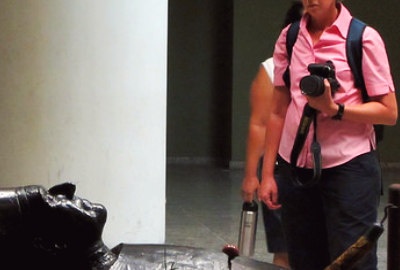
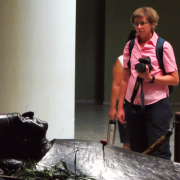
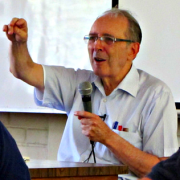
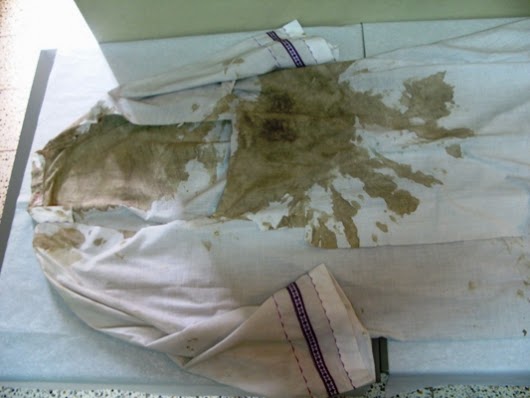
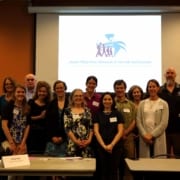
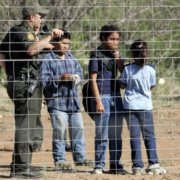
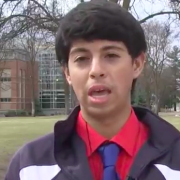
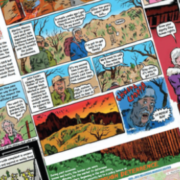
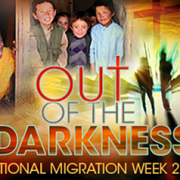
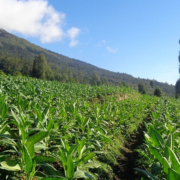



Unquestionably believe that which you stated. Your
favorite reason appeared to be on the net the easiest thing to be
aware of. I say to you, I definitely get irked while people
think about worries that they plainly do not know about. You managed to hit the nail upon the
top as well as defined out the whole thing without having side-effects , people could take
a signal. Will likely be back to get more. Thanks
Great Trip and nice topic, stay with justice and a good heart